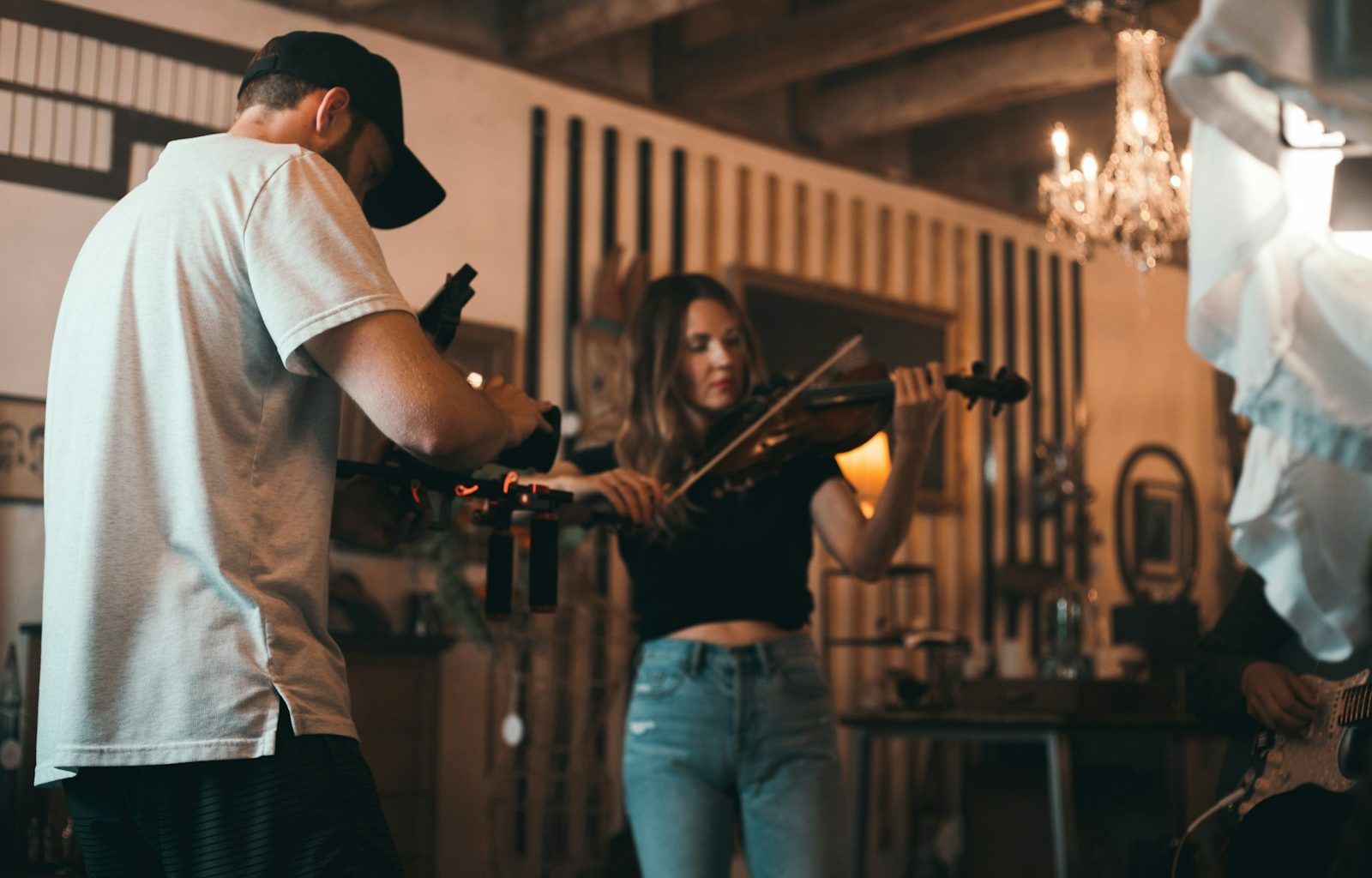Creating your own music video might sound like a daunting task, but it can be a thrilling and rewarding experience. Whether you’re a budding musician, a filmmaker, or just someone with a creative spark, making a music video is a fantastic way to express yourself. Let’s dive into the process step by step, and by the end of this blog, you’ll be equipped to bring your vision to life!
Why Make Your Own Music Video?
Before we get into the technical details, it’s essential to understand why creating your own music video is a fantastic idea. Music videos are a powerful medium for storytelling. They allow you to connect with your audience on a deeper level and showcase your creativity. Plus, a well-made video can help you gain more exposure for your music.
Now, let’s explore how to get started.
Step 1: Develop Your Vision
Every great music video begins with a clear vision. Start by asking yourself these questions:
- What message do I want to convey through my video?
- What emotions should the viewers feel?
- How does the video enhance the meaning of the song?
Take some time to brainstorm ideas. Listen to your song repeatedly and jot down any visuals or themes that come to mind. If you’re stuck, try watching other music videos for inspiration. Pay attention to the ones that resonate with you and figure out why.
Step 2: Write a Concept
Once you’ve gathered some ideas, it’s time to refine them into a concept. A concept is the backbone of your music video. It’s a summary of what the video will be about and how it will look.
For instance, if your song is about heartbreak, your concept could involve a narrative of someone overcoming a breakup. Alternatively, it could feature abstract visuals to evoke the same emotions.
Keep your concept simple and achievable. Remember, you don’t need a Hollywood budget to make something impactful. Creativity often shines brightest under limitations.
Step 3: Create a Storyboard
A storyboard is like a comic strip of your music video. It maps out each scene, showing what the camera will capture and how the story will flow. This step is crucial because it helps you visualize your video and plan your shoot effectively.
Here’s how to create a basic storyboard:
- Divide your song into sections (intro, verse, chorus, bridge, etc.).
- Sketch rough drawings of key scenes for each section.
- Write down notes about camera angles, movements, and any props or locations needed.
Don’t worry if you’re not an artist; stick figures and simple sketches work just fine!
Step 4: Assemble Your Team (or Fly Solo)
Depending on your vision, you may need some extra hands. Here are a few roles you might want to fill:
- Director (if not you): Oversees the creative aspects.
- Cinematographer: Handles the camera work.
- Editor: Polishes the footage and assembles the final video.
- Actors/Dancers: Bring the story to life.
If you’re going solo, don’t fret. Many successful music videos have been shot with just one person behind the scenes. Modern tools and technology make it easier than ever to wear multiple hats.
Step 5: Scout Locations
Locations set the tone for your music video. Look for places that complement your concept and add visual interest. Whether it’s a scenic park, an urban street, or a cozy room, the right setting can make your video pop.
Remember to:
- Get permission if you’re filming on private property.
- Visit the location beforehand to plan your shots.
- Check the lighting conditions and weather forecast.
Step 6: Gather Your Gear
You don’t need a high-end camera to create a stunning music video. Here’s a list of essential equipment:
- Camera: A DSLR, mirrorless camera, or even a smartphone.
- Tripod: For steady shots.
- Lighting: Natural light, LED panels, or reflectors.
- Microphone (optional): If you’re recording live audio.
- Editing Software: Adobe Premiere Pro, Final Cut Pro, or free options like DaVinci Resolve.
Step 7: Shoot the Video
Finally, it’s time to shoot! Keep these tips in mind:
- Follow your storyboard but stay flexible. Sometimes, the best shots are unplanned.
- Film multiple takes of each scene to have options during editing.
- Use a mix of wide, medium, and close-up shots for variety.
- Pay attention to lighting and composition.
Take breaks and review your footage throughout the shoot to ensure you’re capturing what you envisioned.
Step 8: Edit Like a Pro
Editing is where the magic happens. This step brings all your footage together and syncs it with the music. Here’s a basic editing workflow:
- Import your footage and music into your editing software.
- Arrange the clips in sync with the song.
- Add transitions, effects, and color grading to enhance the visuals.
- Review and refine until the video feels just right.
Don’t rush this process. Editing can be time-consuming, but it’s worth the effort to get it perfect.
Step 9: Share Your Masterpiece
Congratulations! You’ve created your own music video. Now it’s time to share it with the world. Upload your video to platforms like YouTube, Vimeo, or TikTok. Promote it on social media and ask your friends to share it.
Engage with your audience by responding to comments and asking for feedback. The more people see your video, the more your hard work will pay off.
Final Thoughts
Creating your own music video is a journey of creativity, patience, and passion. It’s okay if things don’t go perfectly on your first try; every video you make will teach you something new. So grab your camera, let your imagination run wild, and start creating today.
Related Articles:
For further reading, explore these related articles:
- How to Cancel SoundCloud Go: A Step-by-Step Guide
- Apple Music Stats Tracker: Why You Need One and How to Get Started
For additional resources on music marketing and distribution, visit DMT Records Private Limited.






